Abstract
Pseudomonas oleovorans was grown in homogeneous media containing n-alkanoic acids, from formate to decanoate, as the sole carbon sources. Formation of intracellular poly(β-hydroxyalkanoates) was observed only for hexanoate and the higher n-alkanoic acids. The maximum isolated polymer yields were approximately 30% of the cellular dry weight with growth on either octanoate or nonanoate. In most cases, the major repeating unit in the polymer had the same chain length as the n-alkanoic acid used for growth, but units with two carbon atoms less or more than the acid used as a carbon source were also generally present in the polyesters formed. Indeed, copolymers containing as many as six different types of β-hydroxyalkanoate units were formed. The weight average molecular weights of the poly(β-hydroxyalkanoate) copolymers produced by P. oleovorans ranged from 90,000 to 370,000. In spite of the higher cell yields obtained with octanoate and nonanoate, the use of hexanoate and heptanoate yielded higher-molecular-weight polymers. These copolyesters represent an entirely new class of biodegradable thermoplastics.
Full text
PDF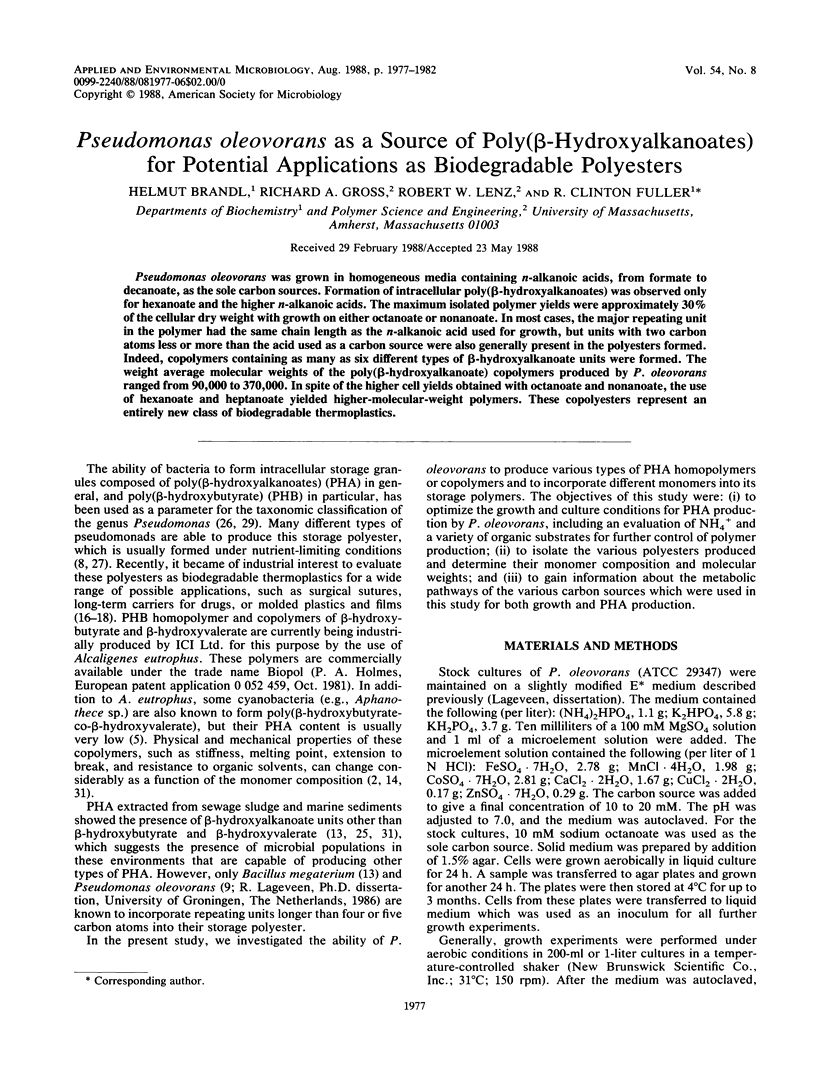
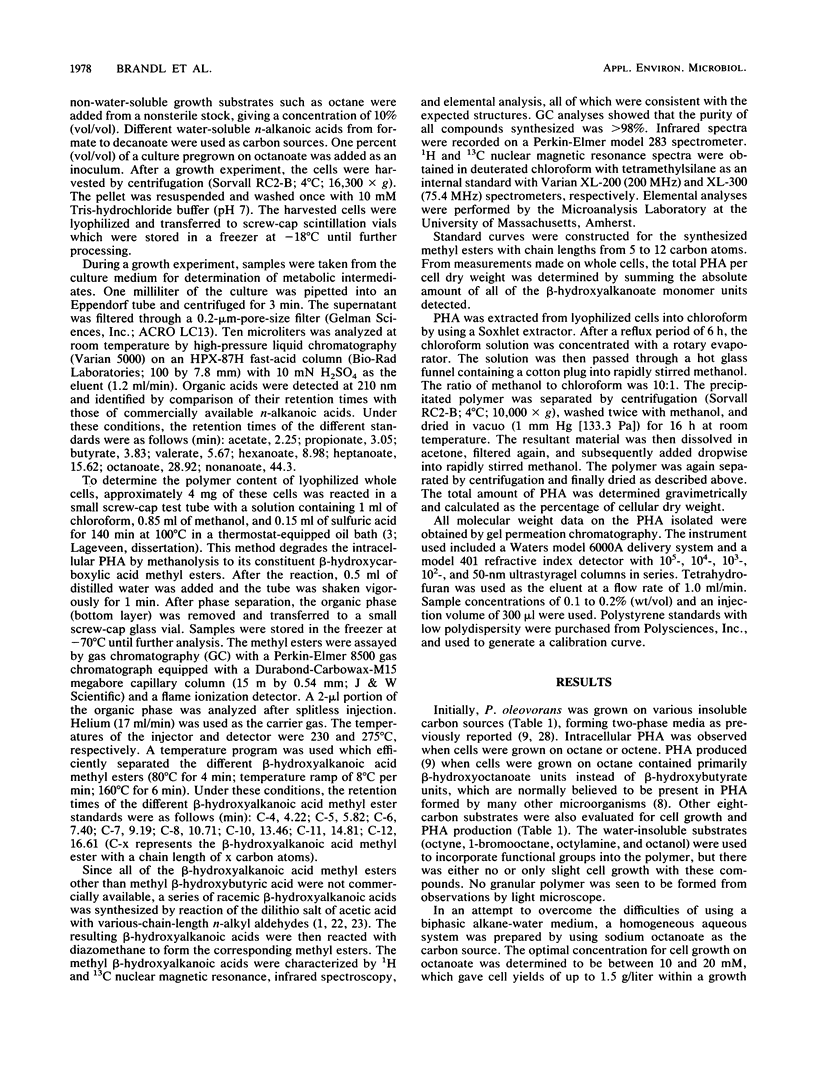
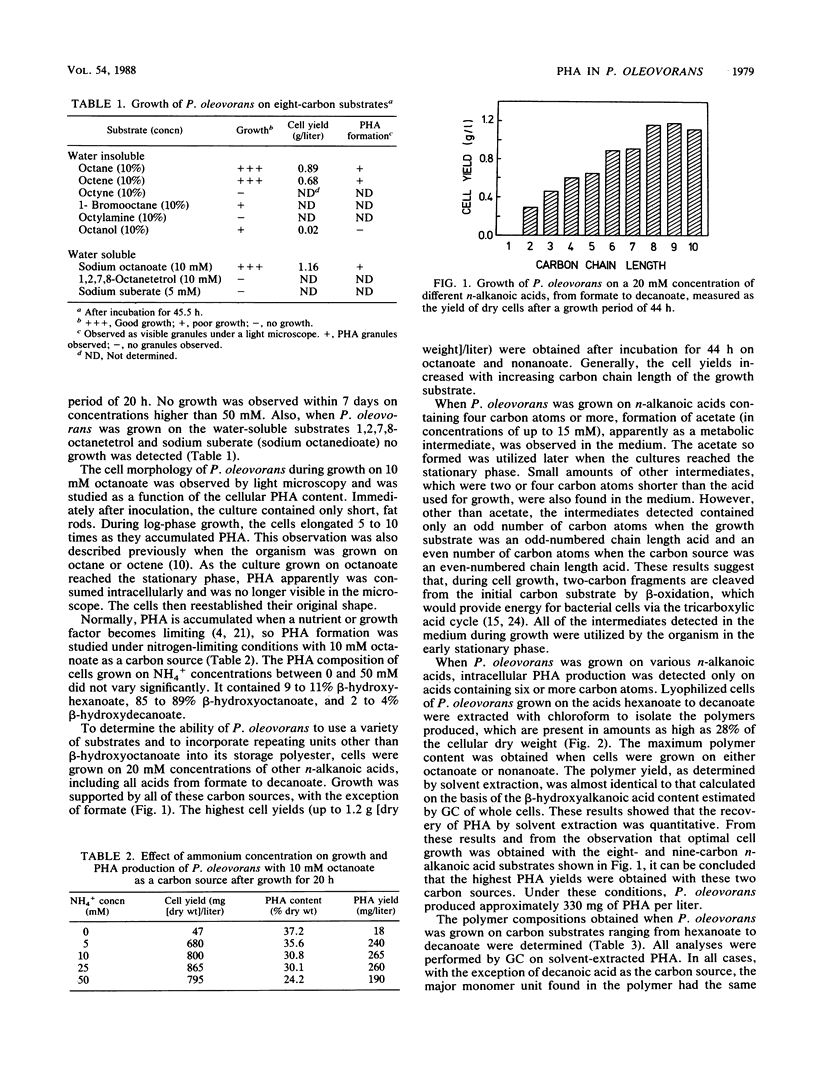
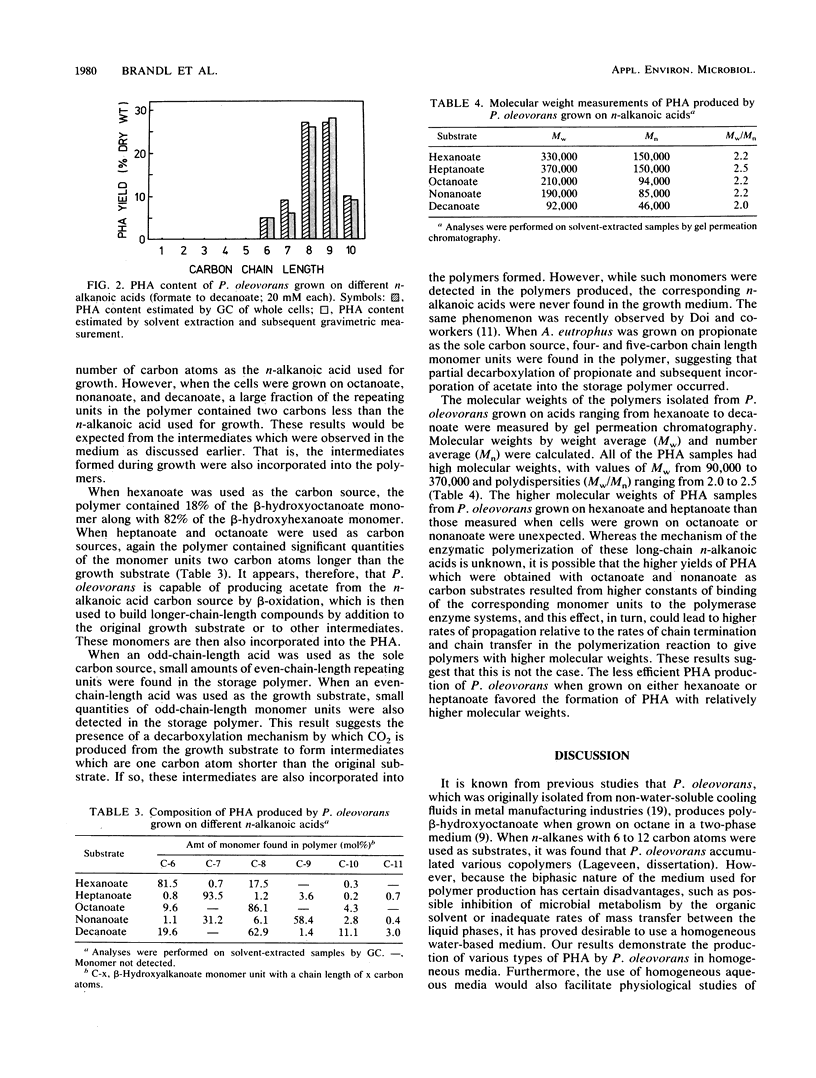
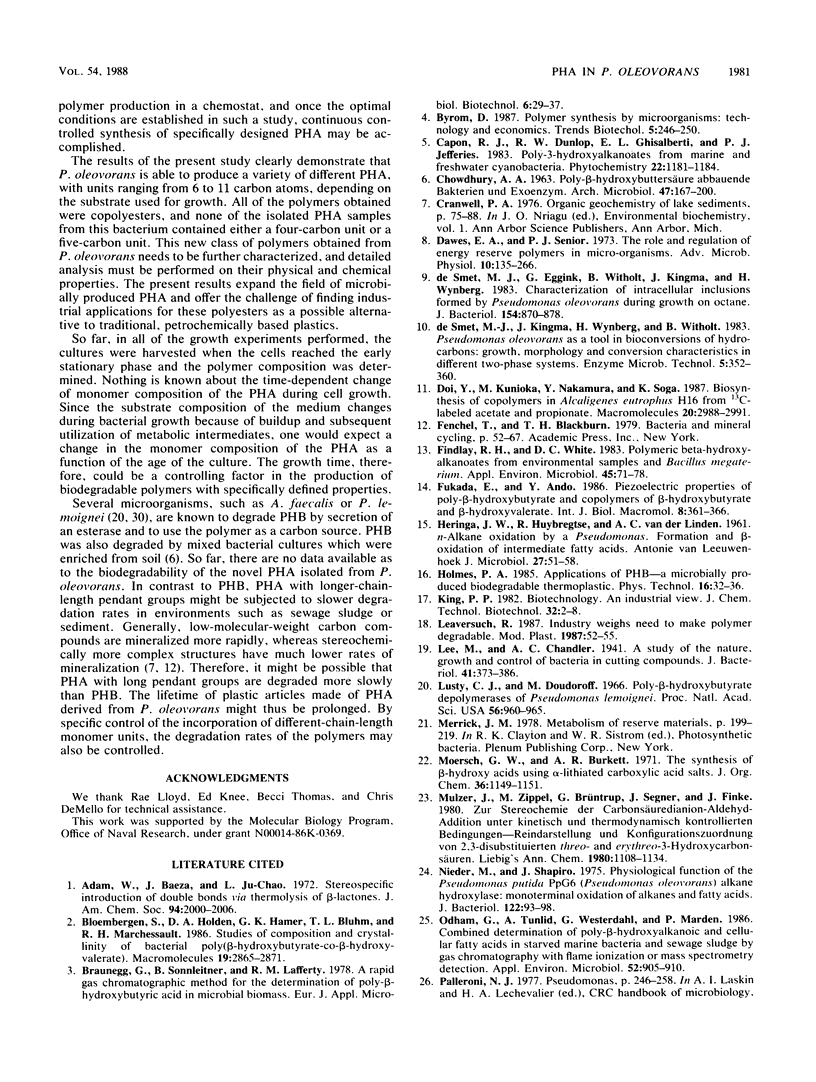

Selected References
These references are in PubMed. This may not be the complete list of references from this article.
- CHOWDHURY A. A. POLY-BETA-HYDROXYBUTTERSAEURE ABBAUENDE BAKTERIEN UND EXOENZYM. Arch Mikrobiol. 1963 Dec 10;47:167–200. [PubMed] [Google Scholar]
- Dawes E. A., Senior P. J. The role and regulation of energy reserve polymers in micro-organisms. Adv Microb Physiol. 1973;10:135–266. doi: 10.1016/s0065-2911(08)60088-0. [DOI] [PubMed] [Google Scholar]
- Findlay R. H., White D. C. Polymeric Beta-Hydroxyalkanoates from Environmental Samples and Bacillus megaterium. Appl Environ Microbiol. 1983 Jan;45(1):71–78. doi: 10.1128/aem.45.1.71-78.1983. [DOI] [PMC free article] [PubMed] [Google Scholar]
- HERINGA J. W., HUYBREGTSE R., van der LINDEN A. n-Alkane oxidation by a Pseudomonas. Formation and beta-oxidation of intermediate fatty acids. Antonie Van Leeuwenhoek. 1961;27:51–58. doi: 10.1007/BF02538422. [DOI] [PubMed] [Google Scholar]
- Lee M., Chandler A. C. A Study of the Nature, Growth and Control of Bacteria in Cutting Compounds. J Bacteriol. 1941 Mar;41(3):373–386. doi: 10.1128/jb.41.3.373-386.1941. [DOI] [PMC free article] [PubMed] [Google Scholar]
- Lusty C. J., Doudoroff M. Poly-beta-hydroxybutyrate depolymerases of Pseudomonas lemoignei. Proc Natl Acad Sci U S A. 1966 Sep;56(3):960–965. doi: 10.1073/pnas.56.3.960. [DOI] [PMC free article] [PubMed] [Google Scholar]
- Nieder M., Shapiro J. Physiological function of the Pseudomonas putida PpG6 (Pseudomonas oleovorans) alkane hydroxylase: monoterminal oxidation of alkanes and fatty acids. J Bacteriol. 1975 Apr;122(1):93–98. doi: 10.1128/jb.122.1.93-98.1975. [DOI] [PMC free article] [PubMed] [Google Scholar]
- Odham G., Tunlid A., Westerdahl G., Mårdén P. Combined Determination of Poly-beta-Hydroxyalkanoic and Cellular Fatty Acids in Starved Marine Bacteria and Sewage Sludge by Gas Chromatography with Flame Ionization or Mass Spectrometry Detection. Appl Environ Microbiol. 1986 Oct;52(4):905–910. doi: 10.1128/aem.52.4.905-910.1986. [DOI] [PMC free article] [PubMed] [Google Scholar]
- Schwartz R. D. Octene epoxidation by a cold-stable alkane-oxidizing isolate of Pseudomonas oleovorans. Appl Microbiol. 1973 Apr;25(4):574–577. doi: 10.1128/am.25.4.574-577.1973. [DOI] [PMC free article] [PubMed] [Google Scholar]
- Stanier R. Y., Palleroni N. J., Doudoroff M. The aerobic pseudomonads: a taxonomic study. J Gen Microbiol. 1966 May;43(2):159–271. doi: 10.1099/00221287-43-2-159. [DOI] [PubMed] [Google Scholar]
- Tanio T., Fukui T., Shirakura Y., Saito T., Tomita K., Kaiho T., Masamune S. An extracellular poly(3-hydroxybutyrate) depolymerase from Alcaligenes faecalis. Eur J Biochem. 1982 May;124(1):71–77. doi: 10.1111/j.1432-1033.1982.tb05907.x. [DOI] [PubMed] [Google Scholar]
- de Smet M. J., Eggink G., Witholt B., Kingma J., Wynberg H. Characterization of intracellular inclusions formed by Pseudomonas oleovorans during growth on octane. J Bacteriol. 1983 May;154(2):870–878. doi: 10.1128/jb.154.2.870-878.1983. [DOI] [PMC free article] [PubMed] [Google Scholar]


